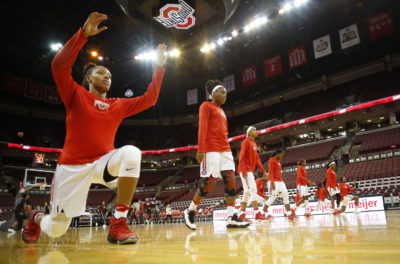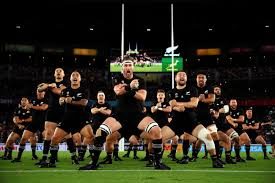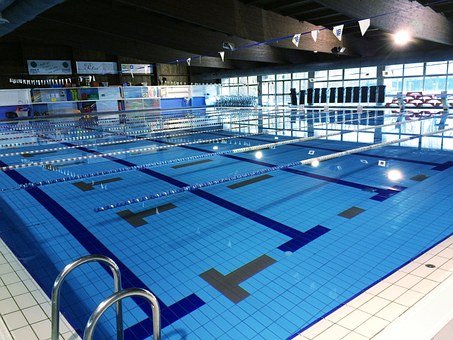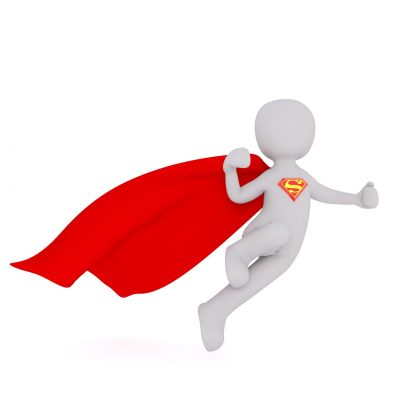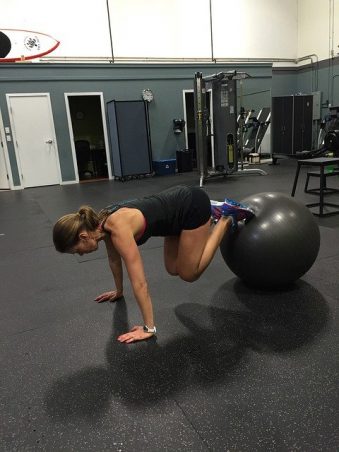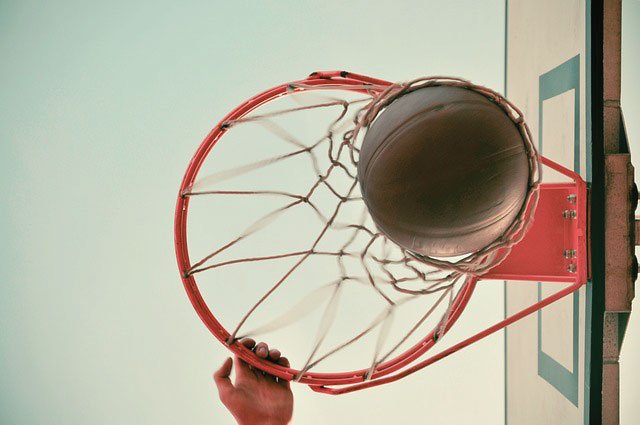At the beginning of the 2017/2018 tennis season I decided to introduce a new goal during the winter training period for the players of Motonautica Pavia.
After a first time (two weeks) in September with a daily double training session made up of tennis and physical conditioning and the following routine of athletic tests, I chose one of them for starting a study of research.
I have chosen the shuttle run test 6×8 meters, common exercise of linear sprint, in total 6 sprints, with a change of direction every 8 meters. It is a very specialized test for tennis since it represents, at the maximum speed, linear run with the change of direction each 8 meters (the width of the court is exactly 8,23 meters). The Italian Tennis Federation has always valued this test with all the players that stop at the technical center of Tirrenia.
Personally I always put two cones (with a height of 30 cm) with a distance of 8 meters one another in the way I can write down with good precision the effective time of the exercise, since I don’t use photocells but a manual chrono. Every athlete must start in line with the first cone, touching it with a hand and then must touch the cones during every change of direction, also during the last sprint in the way it is quite simple to stop the chrono at the right time and also give a coordinative task during the test. see
That was my curiosity: to improve the tennis player performance in a sprint exercise that is very short, but where you must offer a massive acceleration after a hard deceleration and change of direction, is it more productive to focus on explosive components (to improve the quality of sprinting) or focus on stability (since coordination and elasticity are essential in every change of direction)?
So I decided to build up a weekly training program of 5 exercitations for lower body and 5 for the core or upper body, that could be done in both explosive or stable way.
These are the results of the best time of each player during first test in September (females are written with pink, the under 16 with green and the over 16 with black):
| EXPLOSIVENESS GROUP |
TIME |
STABILITY GROUP |
TIME |
| Player 1 |
13”00 |
Player 13 |
12”44 |
| Player 2 |
12”18 |
Player 14 |
12”03 |
| Player 3 |
12”38 |
Player 15 |
12”81 |
| Player 4 |
12”01 |
Player 16 |
13”33 |
| Player 5 |
11”79 |
Player 17 |
12”07 |
| Player 6 |
12”04 |
Player 18 |
11”75 |
| Player 7 |
12”17 |
Player 19 |
11”81 |
| Player 8 |
11”97 |
Player 20 |
11”72 |
| Player 9 |
11”88 |
Player 21 |
13”88 |
| Player 10 |
11”76 |
Player 22 |
11”64 |
| Player 11 |
12”31 |
Player 23 |
11”69 |
| Player 12 |
12”59 |
Player 24 |
12”91 |
For 5 weeks, after the first test, half players (simply chosen by lottery) did the explosive program and the other the stability one, once per week. For the other training time they trained as my first mesocycle was planned to be for the collectivity. After that period I re-tested them to match the time tables; following that, after a month only dedicated to the group program, I inverted the programs for the two groups for the next 5 weeks in order to balance the stimulations of the two different methods.
When you decide to investigate a subject with a study of research for me is very important to force myself in not imagine any result in advance, so I can be the most impartial I can. During the 5 weeks I only focused in make every single exercise more and more effective in order to give to the players the key to feel and implement at best the concept of explosive power or stability.
These are the two programs:
| EXPLOSIVENESS SCHEDULE |
STABILITY SCHEDULE |
| 3 sets: 15 single calf raise with dumbbell (8 kg for over 16 players, 6 kg for under 16, 4 kg for girls and under 14) + 10 trx pull ups, one second to go up and two seconds for the release see |
3 sets: 10 eccentric calves for each foot + 10 trx pull ups, two seconds going upand one second for the release see |
| 3 sets: 10 squat jumps + 12 legs pull ups see |
3 sets: 10 eccentric squat jumps + 12 legs pull down see |
| 3 sets: 20 horizontal consecutive jumps (distance – twice the length of the shoulders) + 10 push up see |
3 sets: 20 horizontal jumps with stability landing after footwork (distance – twice the length of the shoulders) + 5 sequences (each starting hand) hands up and down across a step from a starting position of plank with hands on the floor see |
| 3 sets: 10 alternate single leg jumps on step + 12 medicine ball smashes (4 kg for over 16, 3 kg for under 16 and girls) from athletic stance see |
3 sets: 30 alternate low lateral jumps on step + 12 pullover (5 kg disc for over 16, 2,5 kg for under 16 and girls) from athletic stance see |
| 3 sets: 10 jumps on box, 45 cm height + 20 Russian twist with 4 kg med ball see |
3 sets: 5 depth jumps from box, 35 cm height + 10 dynamic lateral plank see |
You can find all these training circuits by clicking on the hyperlinks available in every cell, to learn more about the execution of the exercises.
Before I did the lottery, I divided the 24 agonistic tennis players of Motonautica Pavia (22 males and 2 females, of age between 13 and 26) in the way I could get a proportionate number of athletes under and over 16 in both groups. In this way, at the end of the 5 training weeks with the schedules, the average was not influenced by different anthropometric and hormonal values.
Exactly after 5 weeks I did the second shuttle run test 6×8 meters:
| EXPLOSIVENESS GROUP |
TIME |
STABILITY GROUP |
TIME |
| Player 1 |
12”64 (-0,36) |
Player 13 |
12”07 (-0,37) |
| Player 2 |
11”89 (-0,29) |
Player 14 |
11”51 (-0,52) |
| Player 3 |
12”04 (-0,34) |
Player 15 |
12”48 (-0,33) |
| Player 4 |
12”28 (+0,27) |
Player 16 |
12”64 (-0,69) |
| Player 5 |
11”75 (-0,04) |
Player 17 |
12”02 (-0,05) |
| Player 6 |
11”79 (-0,25) |
Player 18 |
11”38 (-0,37) |
| Player 7 |
11”88 (-0,29) |
Player 19 |
11”75 (-0,06) |
| Player 8 |
11”48 (-0,49) |
Player 20 |
11”43 (-0,29) |
| Player 9 |
11”63 (-0,25) |
Player 21 |
13”40 (-0,48) |
| Player 10 |
11”32 (-0,44) |
Player 22 |
11”48 (-0,16) |
| Player 11 |
12”06 (-0,25) |
Player 23 |
11”60 (-0,09) |
| Player 12 |
12”30 (-0,29) |
Player 24 |
12”71 (-0,20) |
What the average told us:
- Explosiveness schedule: improvement of 0,25 seconds
- Stability schedule: improvement of 0,30 seconds
As study of research, I did not receive an answer about my question of which could be the best strategy to improve the shuttle run test 6×8 meters because those two numbers are pretty close one another.
According to the average every tennis player has, weekly, two physical trainings and 3 tennis trainings, one hour and a half each training; that means during the 5 weeks with the schedules the players practiced not only with stability or explosiveness inputs but in a very complete way. And that is fair, it was not my intention to influence their period of general conditioning.
Surely I can consider myself very satisfied by this research, because I had the chance to quantify and verify the important improvements gained by the players in only five weeks. The combination between legs, core and upper body workout let every athlete feel and learn at best the characteristic of the effort they were facing; they managed every training session with the maximum focus and motivation and many of them improved technical details of pushing and stabilizing (also in the upper body) that will give them lots of consciousness about their body and big benefit on court. There is only a time that was not improved during the second test; this guy simply could not train regular the previous week because of illness and school duties.
In conclusion I can assert that this experimental study gave me a further confirmation about how much it is essential to train the strength and power of a tennis player, but always carrying on inputs of stabilization and elasticity (like eccentric strength for example) overall during the puberty. Situational sports like tennis give the chance to focus on many sides of the performance and the cognitive components, and this is the reason why I think is necessary to build up a solid method also by experimenting and questioning oneself sometimes.

